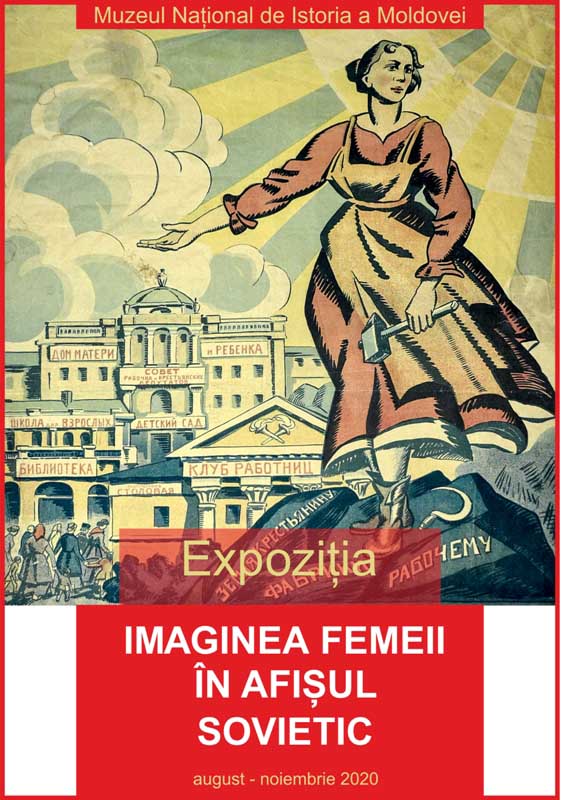The museum fulfills its natural purpose, that of preserving and making available for public viewing various categories of exhibits. This time in the focus is the collection of posters featuring the image of a Soviet woman who played an important role in all areas of socio-economic and cultural life.
The first Soviet posters were dated 1917, the time of the Bolshevik coup in Russia; they served as a means of mass communication used in order to justify the Bolshevik dictatorship. The Soviet authorities saw the poster as an effective tool for mobilizing the masses, who could not read or write. Today, looking at these posters, it is easy to imagine that the production of posters in the Soviet Union was extremely intense. Hundreds of posters were created and printed in tens or even hundreds of thousands of copies, displayed everywhere: in towns and villages, in factories and plants, in kolkhozes, schools, hospitals, etc. The process of creating the posters was very complicated and included the effort of a large number of painters, writers, poets, journalists.¶
The exhibition Images of Women in Soviet Posters is the result of research and development of the National Museum of History of Moldova collection of Soviet posters (about 3000 exhibits). Posters from the collection that has been made up for several decades of the 20th century on the basis of donations and acquisitions feature women involved in the construction of a new Soviet society. The chronological framework of the exhibition covers the period from 1920 to 1985. The oldest poster dates from 1920 and is dedicated to the rights and opportunities acquired by women after the 1917 revolution. Through the 50 posters on display, we offer the visitors an overview of the image of women in the Soviet poster. These objects, of documentary, historical and artistic value, were also an effective means of propaganda, being an evidence of the past and briefly reflecting the processes and events that took place in Soviet society. ¶
Diverse in message, format and design, as well as in terms of theme, the posters was structured in several groups: women after the 1917 revolution, equal in rights with men; the role of women in the collectivization process; women in the war front and behind the front line; the contribution of women to the restoration of the national economy (at a lathe, in a mine, in a tractor); woman as a mother; women of various professions; women fighting for peace; women and sports, etc. Important by message and valuable by design are the posters with the image of a woman during the Second World War, used to the maximum during military mobilization, in the recruitment of civilians and their employment in the war industry. A shrill expressiveness and colorfulness are inherent in the posters depicting women in agriculture. The posters dedicated to the motherhood, with concise texts and suggestive images, had a special role, representing the portrait of the new woman who, most of the times, was urged to give up the household and to participate in work and social activities. Posters depicting women in the restoration of the national economy, in sports, etc., are also very clear. Famous artists from the USSR, including the MSSR, contributed to the creation of the posters: D. Bedny, N. Coretsky, A. Bubnov, N. Vatolina, I. Bogdesco, G. Dimitriu, O. Cojocaru, I. Taburţă, and others.
The exhibition once again demonstrates that the Soviet poster was one of the most effective methods of promoting state ideology and policy.
Curator: Vera Stăvilă.



















































